Want More of an Autopilot Investment Strategy? Let’s Look at Some Robo-Advisors
Robo-advisors have exploded in popularity since they first came to Canada in 2014. They offer a cheap and easy way to grow your long-term savings. Heck, if you turn on auto-deposits, you’ll never even have to think about your investment portfolio.
Plus, you get to say that you have an “investment portfolio.” Isn’t that nice?
For novice investors or everyday Canadians looking to grow their savings, robo-advisors are a great choice. Read on for a breakdown of all your options in Canada, including the top Robo-advisors in Canada for 2022.
What is a Robo-Advisor?
You know the cartoon version of the stock broker yelling, “Buy! Buy! Sell! Sell!” into two phones at once? A robo-advisor works kind of like that, but with millions of phones.
A robo-advisor is a digital platform that uses an algorithm to invest your assets. Your money usually goes into broad-based, low-cost exchange traded funds (ETFs), mutual funds, stocks, and bonds that vary in their volatility.
You help define how that algorithm acts, usually through a questionnaire that asks you how you’re going to use the money eventually, when you want that money, and how aggressive you want to be in your investments.
Robo-advisors are much cheaper than their human counterparts, because they can handle many more clients, and are — of course — automated.
Just remember that no investment strategy is completely foolproof. Every robo-advisor is built by humans and is subject to the same market changes as everyone else.
Luckily, many platforms come with human support when you have questions.
What to Think About When Choosing a Robo-Advisor
What Are You Saving For?
Are you dipping your toe in, or are you going to be there for the long haul? Differences of 0.05% in annual fees might be negligible if you want a conservative portfolio to save up for a new car, but that could add up to tens of thousands of dollars by the time you want to cash out your RRSP.
And while all robos have customer support teams, some offer dedicated human advisors who can help you figure out your financial future. That’s a big bonus if you don’t feel up to the task of planning it all out yourself.
Look at the Fees and Account Minimums
You should know how much a robo-advisor takes each year as a percentage of your total fund amount.
Also think about the management expense ratios (MERs). This cost is built in to the underlying ETFs that the robo-advisors trade. Some robo-advisors will explicitly spell out these fees, in addition to their own — others won’t.
Some robo-advisors require a minimum account balance before you can open one with them. Others will hold small amounts in cash for you, and invest it once the amount gets big enough — usually $1,000. If your nest egg is small, these ones may not be for you.
Now that you’ve got those numbers, think about whether there are other perks, like customer service or ease of use, that would make higher fees worth it for you.
Do You Need Human Support?
If something goes wrong with your money, you’re not going to want to deal with a chatbot. Find out how quickly you can get someone on the phone for technical or financial advice.
Look at social media posts for stories of times people have had to deal with humans, and how that went.
Think about what happens when you have questions. Are you going to want to call up an account manager or advisor about your homebuying plans in 20 years? Or are you comfortable researching that on your own?
What’s Important to You?
Are low fees the most important thing to you? Do you need your investments to be halal? What about socially responsible?
These could be important factors in your life, and would also be important when it comes to your money.
What Happens if You Move On?
Find out whether you’re going to be dinged if you withdraw your money. You never know when the next best robot is going to walk by with a management fee structure that gets you all hot and bothered.
Best Robo-Advisors in Canada
Wealthsimple

- Assets Under Management and Administration: $8.4 billion (Wealthsimple); $1.4 trillion (Power Financial)
- Annual Fees: 0.5% (Under $100,000), 0.4% (Over $100,000)
- MERs: 0.12% to 0.15% (Classic); 0.21% to 0.23% (Socially Responsible Investing — SRI); 0.25% to 0.5% (Halal)
- Minimum Balance: None
This is the big boy.
Wealthsimple has been around since 2014, and is undoubtedly Canada’s most popular robo. It has a super slick interface, and its ease of use is unparalleled. Many new robo investors default to Wealthsimple, which is often a good choice.
Wealthsimple also offers the most diverse investing options, with socially responsible and halal portfolios.
Its fees aren’t the lowest among Canadian robo-advisors, but they’re not what you’d call high, either. And they’re up front with their MERs.
Along with the flagship managed portfolio (Wealthsimple Invest), you can also make individual trades on your own (Wealthsimple Trade) or put your money in a what it calls a “hybrid savings/chequing account” with 0.5% interest (Wealthsimple Cash).
If you invest more than $100,000, you get upgraded to Wealthsimple Black, which comes with perks and lower fees. At $500,000 you get a personal financial report and other custom rewards with Generation.
Wealthsimple also fancies itself a magazine, and often puts out helpful personal finance articles aimed at newbies — as well as celebrity interviews on money.
Questwealth Portfolios (Questrade)
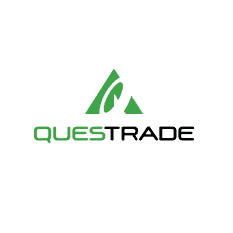
- Assets Under Management and Administration: $30 billion (Questrade)
- Annual Fees: 0.25%
- MERs: 0.17% to 0.22% (Classic); 0.21% to 0.35% (SRI)
- Minimum Balance: $1,000
No, these aren’t separate companies. Questwealth is Questrade’s robo-advisor, which used to be called Portfolio IQ. Questrade itself has been a player in Canada since 1999.
Cost is really where Questwealth shines. It has the lowest percentage-point fees of any Canadian robo-advisor, which could save you tens or hundreds of thousands of dollars in the long run.
Some people have complaints about the Questrade app — it’s not as smooth or pretty as Wealthsimple’s, but it’s totally usable.
iA WealthAssist
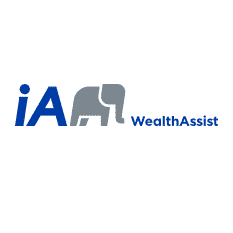
- Assets Under Management and Administration: $15.4 billion (iA Financial Group)
- Annual Fees: 0.7% (including MER)
- Minimum Balance: None, but accounts under $1,000 are held in cash
Formerly known as Invisor, iA WealthAssist was acquired in 2019 by iA Financial Group.
This robo is different because its fees are inclusive of MERs. They look a little higher than other robo-advisors at first glance, but it’s peace of mind for investors who want to know exactly what they’ll be paying across all portfolios.
Having an account with WealthAssist could also make sense if you’re already a customer of its parent company’s insurance arm.
Smart Money Invest

- Annual Fees: 0.8%
- Minimum Balance: $5,000
Those fees are nothing to sneeze at, and Smart Money Invest isn’t exactly forthcoming about MER costs. But it aims to provide a higher-class service, which is also reflected in the minimum balance required to start an account.
Clients get a live discussion with a wealth planner to pick out a portfolio just for them — a step above many other robo-advisors that just get clients to fill out an online risk tolerance questionnaire.
If you’re looking for a blend of robot-human advice (a cyborg-advisor?) Smart Money could be a smart move.
Nest Wealth
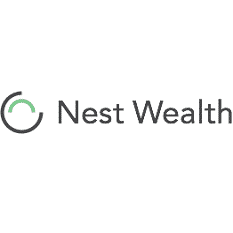
- Assets Under Management and Administration: $2 trillion (Fidelity group)
- Monthly Fees: $25 ($10,000 to under $75,000), $50 ($75,000 to under $150,000), $100 ($150,000 to under $325,000), $150 ($325,000 and up)
- MERs: 0.13% on average
- Minimum Balance: None, but accounts under $1,000 are held in cash
Nest Wealth is a bit of an odd duck due to its flat monthly fee structure, instead of a percentage of your money. That’s why it promises the “lowest portfolio management fees in Canada” right on its homepage.
The robo also promises a personal touch. Like Smart Money, an investment advisor will talk to customers before their first deposit is invested, in addition to the risk tolerance questionnaire, to make sure their Nest egg (get it?) is well taken care of.
And Nest Wealth Plus lets people working with financial advisors get access to customized ETF portfolios, if you’re itching for the cyborg route.
Nest is partnered with National Bank Independent Network, providing some assurance for skeptical investors.
CI Direct Investing
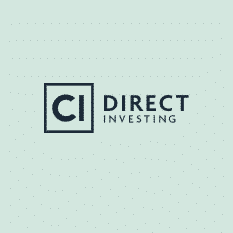
- Assets Under Management and Administration: $280 billion
- Annual Fees: 0.6% (Under $150,000), 0.4% (Next $350,000), 0.35% (Above $500,000)
- MERs: 0.16% to 0.26% (ETFs), 0.79% to 0.94% (Impact), 1% to 1.55% (Private)
- Minimum Balance: None, but accounts under $1,000 are held in cash
Formerly known as Wealthbar, CI Direct Investing is another robo that offers access to a financial advisor who can help build you a plan, give you advice, or do nothing at all.
Its fees are average for robos, and you benefit with larger accounts at 0.35%.
Its app is sleek and easy to use, and comes with instant bank transfers, whereas other robos make you wait a couple days.
Justwealth

- Annual Fees: 0.50% (Under $500,000), 0.4% (Over $500,000). Minimum fee is $4.99 per month for non-RESP accounts.
- Minimum Balance: $5,000
Justwealth clients also work with their own dedicated portfolio managers to pick a portfolio that suits them, and to talk about financial planning into the future.
It also has some fun customization options.
You can open Canadian and U.S. dollar accounts, which are handy if you feel like experimenting with across-the-border portfolios. Justwealth also has a suite of socially responsible investing portfolios. And it offers tax loss harvesting for its investors.
One thing it’s missing: an app.
ModernAdvisor

- Assets Under Management and Administration: $81,543,000 (Guardian Capital Group)
- Annual Fees: 0% (Under $10,000), 0.5% (Next $90,000), 0.4% (Next $400,000), 0.35% (Over $500,000)
- MERs: 0.25% on average
- Minimum Balance: None, but accounts under $1,000 are held in cash
If you’re just starting out and don’t want to give up your slice of the pie, ModernAdvisor could be a good choice as it will manage your first $10,000 for free. And the fees are reasonable after that, topping out at 0.5% for investments between $10,000 and $100,000.
ModernAdvisor’s $1,000 trial account is unique in the space. Curious investors can use the “Springboard,” as they call it for free for 30 days. If you want to keep it, you also keep the profits it generated.
It also offers socially responsible investing portfolios.
VirtualWealth

- Assets Under Management and Administration: $55 billion (Aviso Wealth)
- Annual Fees: 0.6% (Under $100,000), 0.5% (Next 400,000), 0.4% (Next 500,000), 0.35% (Above $1000,000)
- MERs: Under 0.15% (Normal), 0.72% to 0.96% (Responsible Investing)
- Minimum Balance: Minimum Balance: None, but accounts under $2,000 are held in cash
VirtualWealth is discount brokerage Qtrade Direct Investing’s robo-advisor.
If you’re serious about your responsible investments, VirtualWealth’s RI portfolio is managed by NEI Investments, a decades-long player in the Canadian responsible investing space.
That should give peace of mind to Canadians who would really prefer not to support sketchy tobacco companies and the like.
VirtualWealth also has a good-looking app that lets you track your portfolio and add funds easily.
BMO Smartfolio
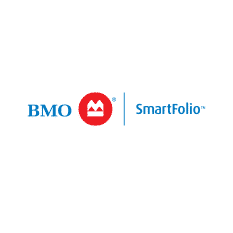
- Assets Under Management and Administration: $973.2 billion (BMO)
- Annual Fees: 0.7% (First $100,000), 0.6% (Next 150,000), 0.5% (Next 250,000), 0.4% (Above 500,000)
- MERs: 0.2% to 0.35%
- Minimum Balance: $1,000
BMO was the first of Canada’s big banks to get into the online portfolio management game, and they’re still a solid choice.
Smartfolio offers a clean web interface. If you’re a BMO customer, it can make sense to scoot some of your capital over to Smartfolio to see what it’s about, as it seamlessly blends in with the rest of your online banking.
Smartfolio doesn’t come with responsible investing or halal portfolios. If those are deal-breakers, this might not be the robo for you.
RBC InvestEase
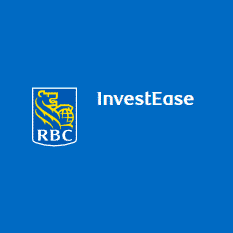
- Assets Under Management and Administration: $982.9 billion (RBC)
- Annual Fees: 0.5%
- MERs: 0.11% to 0.13% (Standard), 0.18% to 0.23% (Responsible Investing)
- Minimum Balance: Minimum Balance: None, but accounts under $100 are held in cash
The first thing that stands out between BMO’s and RBC’s robos is their fees — RBC beats BMO in management fees below $250,000, and its MERs are about half as high, depending on the portfolio.
InvestEase also has a responsible investing portfolio, which excludes companies involved with “tobacco, controversial weapons, civilian firearms, as well as companies involved in very severe controversies,” according to the bank.
Same as with BMO’s Smartfolio, RBC customers will be pleased at how InvestEase works alongside their normal online banking experience.
Pros and Cons: Robo-Advisors Vs. Financial Advisors
While robo-advisors outsource your investment decisions to computers, financial advisors will make those calls themselves — at your direction, of course.
The other difference is price. Most robo-advisors charge between 0.25% and 0.8% of the amount they manage per year.
For comparison, financial advisors usually charge about 1% of the managed amount — or more, for prestigious firms.
Financial advisors often make sense for wealthy clients with complex situations. To be clear, we’re talking “a few vacation properties” complex, not “I still owe my father-in-law $100 from a bad Leafs bet” complex.
But even if your savings account is on Bay Street instead of the Cayman Islands, a financial advisor can be a bigger help with financial life questions. Thinking of buying a house? What about a car?
While robo-advisors can set you up with a solid portfolio, financial advisors have been around the block and can sometimes come up with strategies you might not have heard of. Your robot pal most likely isn’t going to “know a guy” in the Calgary real estate business.
Do Robo-Advisors Beat Human Advisors?
That depends.
In terms of fees? Definitely. In “set-it-and-forget-it” convenience? For sure. In straightforward long-term investing? Most likely.
If you’re an average person who wants to grow their assets in more than a savings account without thinking about it too much, a robo-advisor is a great choice.
Keep in mind that most financial advisors never beat the market. Some of the most celebrated investors of all time will tell you the same thing: put your money in a fund that closely mirrors the S&P 500 and watch it grow, slowly but surely, over time.
But if your wealth is complex — or if you have a lot of it — it can make sense to outsource its management to a professional who’s always a phone call away.
Frequently Asked Questions
Which Robo-Advisor Has the Best Returns?
The Globe and Mail did the legwork here, asking 10 robo-advisors for three-year annualized returns on a growth portfolio, after fees, for the fiscal year ending Sept. 30th, 2021.
In order, they were:
- Justwealth 10.03%
- Nest Wealth 9.88%
- VirtualWealth 9.50%
- Smart Money Invest 8.55%
- RBC InvestEase 8.29%
- CI Direct Investing 8.18%
- BMO SmartFolio 8.1%
- Wealthsimple 7.85%
- Questwealth Portfolios 7.81%
- ModernAdvisor 7.78%
If you do more research on returns, look for the longest timeframe available. While funds can vary wildly in one-year returns, they even out a lot more at the three- and five-year marks.
A good comparison here is Vanguard’s Growth ETF (VGRO.TO), which has a 10.12% three-year return. But of course, buying that ETF lets you skip the robo-advisor fees.
If you’re investing with one of the robos above, you’re paying for convenience, advice, and all the good things that come with robo-advisors — not just the ETF.
Do Robo-Advisors Beat the Market?
“Beating the market” is difficult and requires a great deal of research and/or luck. According to S&P Dow Jones Indices, after 15 years, 92% of large fund managers get lower returns than their benchmark — which is usually the S&P 500, or what many people refer to as “the market.”
That’s why robo-advisors often hold lots of positions, and aim to track the market’s trajectory over the long term. Having a well-diversified portfolio can help your investments weather bad days (or weeks, or months) to track upward with the market over time.
Which Robo-Advisor is Best for Beginners?
Wealthsimple lives up to its name. The platform is no-fuss, and easy on the eyes. Its advertising reflects this newbie target market, too — featuring celebrities or everyday Canadians just wanting somewhere to put their money and watch it grow. It allows auto-deposits and round-up features that make it attractive to even the greenest investor.
Nest Wealth’s flat fee structure would be appealing to investors who want to know exactly how much their robo is charging them — as would iA WealthAssist’s MER-inclusive annual fees.
Don’t forget that ModernAdvisor will manage your first $10,000 for free and gives you a $1,000, one-month free trial, which gives you a chance to figure out whether this whole robo-advisor thing is for you.
And if you’re already a BMO or RBC customer, it’d be convenient to add some of your funds to their robo-advisors. Both BMO Smartfolio and RBC InvestEase are solid choices.
Are Robo-Advisors Safe? Can They Lose Money?
Whether we searching for stocks, or looking for something to empty our bitcoin and crypto wallets into, it is important to remember that any time you make an investment, you can lose money. That’s just a fact.
But all of the robo-advisors listed here — or the brokerages or parent companies that deal with clients’ money — are members of the Canadian Investor Protection Fund (CIPF), which protects investors if the robo becomes insolvent. According to its site, the CIPF covers, in general:
- $1 million for all general accounts combined (such as cash accounts, margin accounts and TFSAs), plus
- $1 million for all registered retirement accounts combined (such as RRSPs, RRIFs and LIFs), plus
- $1 million for all registered education savings plans (RESPs) combined where the client is the subscriber of the plan.
Keep in mind that the CIPF doesn’t cover bad investments — just if the company you invest with goes bye-bye.
Most robo-advisors also allow you to choose how aggressive you want to be with your investments. Plus, the fact that they use wide diversification for a steadier portfolio.
And time, as they say, heals all wounds. Zoom out far enough from any crash — even the 2008 financial crisis — and you’ll see the market continue a steady upward trend.
Final Thoughts
While Canada might have fewer robo-advisor options than our southern cousins, there are still a heap of options to choose from.
Which one is best for you comes down to what you value. Whether you want the lowest possible fees to maximize your returns, or if you’re okay with paying more for a gorgeous app and help from an advisor is totally up to you.
Either way, it’ll cost you a lot less in the long run than a traditional financial advisor.
